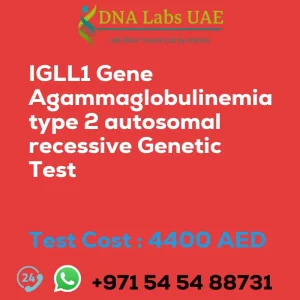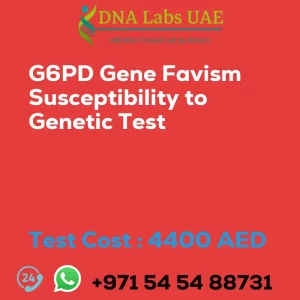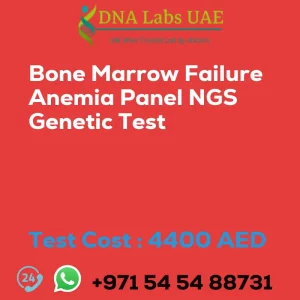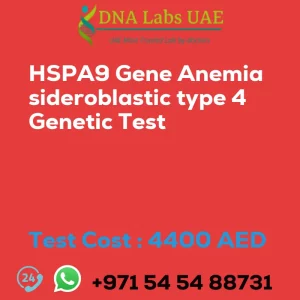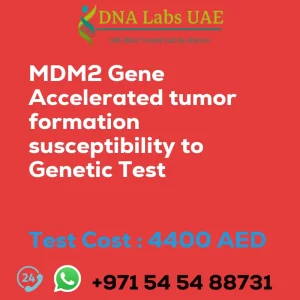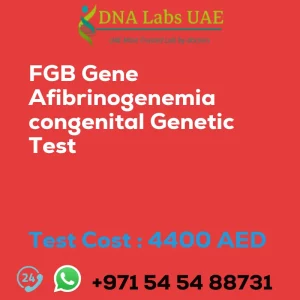HBG2 Gene Cyanosis Transient Neonatal Genetic Test
Introduction
The HBG2 gene is responsible for producing a protein called hemoglobin gamma-G. Hemoglobin is a protein found in red blood cells that carries oxygen throughout the body. Mutations in the HBG2 gene can lead to a condition called cyanosis. Cyanosis is a bluish discoloration of the skin and mucous membranes due to a lack of oxygen in the blood. It can be caused by various conditions, including heart defects, lung diseases, and certain genetic disorders. Transient neonatal cyanosis refers to a temporary episode of cyanosis that occurs in newborns. It is often due to a delay in the transition from fetal to adult hemoglobin production.
Test Details
NGS (Next-Generation Sequencing) genetic testing is a type of genetic testing that allows for the simultaneous analysis of multiple genes or even the entire genome. It can be used to identify genetic mutations or variations that may be associated with certain diseases or conditions. In the context of transient neonatal cyanosis, NGS genetic testing can be used to analyze the HBG2 gene and other relevant genes involved in the production of hemoglobin. This can help identify any mutations or variations that may be contributing to the cyanosis episode.
Test Components and Price
- Test Name: HBG2 Gene Cyanosis Transient Neonatal Genetic Test
- Price: 4400.0 AED
- Sample Condition: Blood or Extracted DNA or One drop Blood on FTA Card
- Report Delivery: 3 to 4 Weeks
- Method: NGS Technology
- Test Type: Hematology
- Doctor: Hematologist
- Test Department: Genetics
Pre Test Information
Clinical History of Patient who is going for HBG2 Gene Cyanosis, transient neonatal NGS Genetic DNA Test. A Genetic Counselling session to draw a pedigree chart of family members affected with HBG2 Gene Cyanosis, transient neonatal NGS Genetic DNA Test gene HBG2.
Conclusion
By identifying specific genetic factors, NGS genetic testing can provide valuable information for diagnosing and managing transient neonatal cyanosis. It can help guide appropriate medical interventions and genetic counseling for affected individuals and their families.
| Test Name | HBG2 Gene Cyanosis transient neonatal Genetic Test |
|---|---|
| Components | |
| Price | 4400.0 AED |
| Sample Condition | Blood or Extracted DNA or One drop Blood on FTA Card |
| Report Delivery | 3 to 4 Weeks |
| Method | NGS Technology |
| Test type | Hematology |
| Doctor | Hematologist |
| Test Department: | Genetics |
| Pre Test Information | Clinical History of Patient who is going for HBG2 Gene Cyanosis, transient neonatal NGS Genetic DNA Test. A Genetic Counselling session to draw a pedigree chart of family members affected with HBG2 Gene Cyanosis, transient neonatal NGS Genetic DNA Test gene HBG2 |
| Test Details |
The HBG2 gene is responsible for producing a protein called hemoglobin gamma-G. Hemoglobin is a protein found in red blood cells that carries oxygen throughout the body. Mutations in the HBG2 gene can lead to a condition called cyanosis. Cyanosis is a bluish discoloration of the skin and mucous membranes due to a lack of oxygen in the blood. It can be caused by various conditions, including heart defects, lung diseases, and certain genetic disorders. Transient neonatal cyanosis refers to a temporary episode of cyanosis that occurs in newborns. It is often due to a delay in the transition from fetal to adult hemoglobin production. During fetal development, the predominant form of hemoglobin is fetal hemoglobin (HbF), which has a higher affinity for oxygen than adult hemoglobin (HbA). After birth, there is a gradual switch from producing HbF to HbA. NGS (Next-Generation Sequencing) genetic testing is a type of genetic testing that allows for the simultaneous analysis of multiple genes or even the entire genome. It can be used to identify genetic mutations or variations that may be associated with certain diseases or conditions. In the context of transient neonatal cyanosis, NGS genetic testing can be used to analyze the HBG2 gene and other relevant genes involved in the production of hemoglobin. This can help identify any mutations or variations that may be contributing to the cyanosis episode. By identifying specific genetic factors, NGS genetic testing can provide valuable information for diagnosing and managing transient neonatal cyanosis. It can help guide appropriate medical interventions and genetic counseling for affected individuals and their families. |


